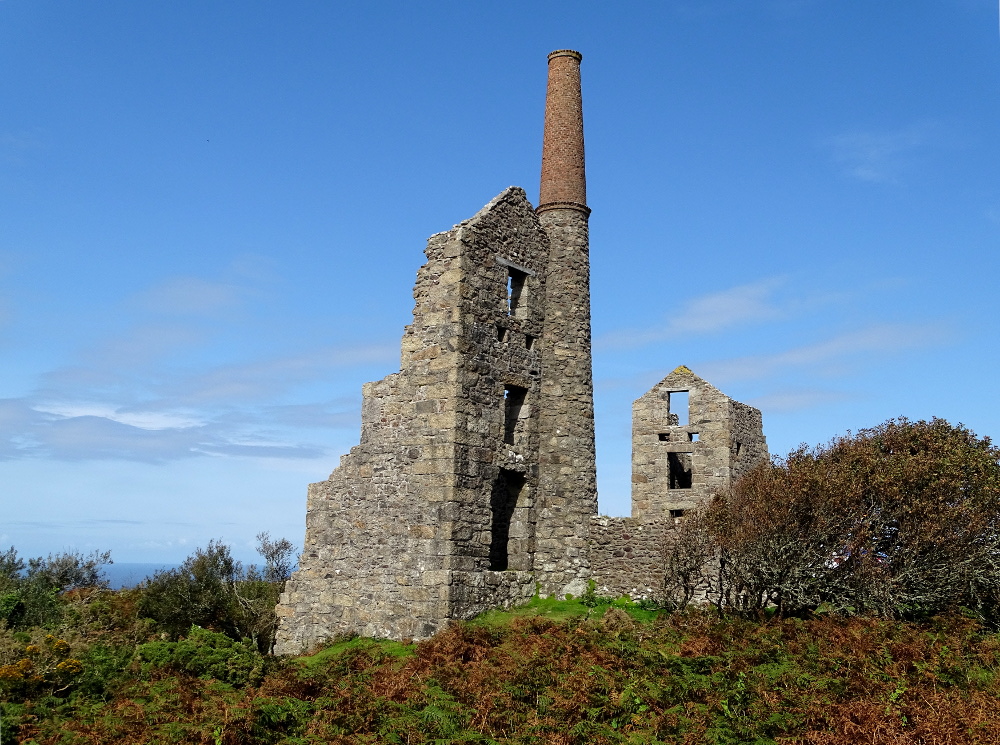Sitting alongside the road between Zennor and St Just are the two engine houses of Carn Galver mine.
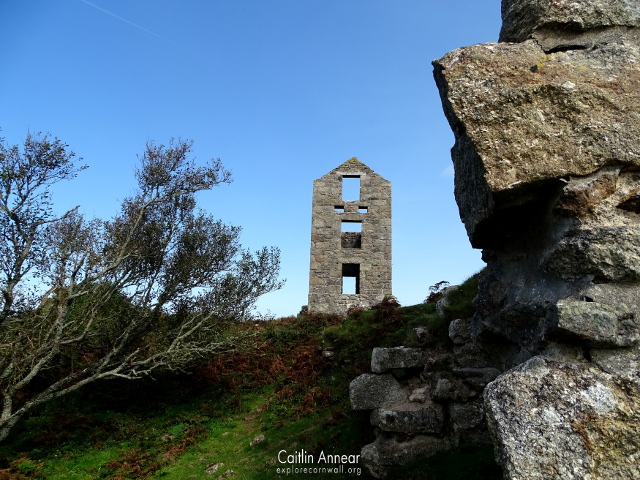
Mining in the area was first recorded in 1674, with many of the lodes being discovered during this period. It wasn’t until 1835 when Morvah and Zennor Tin Mines was first formed, although this covered a larger section of mines than just Carn Galver. This venture was fairly successful and good tin and copper prices led to a small boom. The following year, need for repair work led to delays in production and two accidents. In 1840 the mine closed and equipment was put up for sale.
In 1850 a new company was started under the name Carn Galver. Old shafts were deepened and an old adit was improved to stretch from Porthmoina Cove to the main shafts. 1855 saw the mine suffer from ventilation problems and the adit had to be abandoned. This was soon fixed following the installation of a ‘Hydro Pneumatic Box’ which provided excellent results.
In 1857 a new sett was granted. The following year a new underground engine was installed to drain the bottom levels of the mine, however water shortages above ground, especially during the summer months led to increased costs. However, profits were good and the mine was able to pay off its debts and continue exploration. High tin prices also allowed for the installation of a new dressing floor.
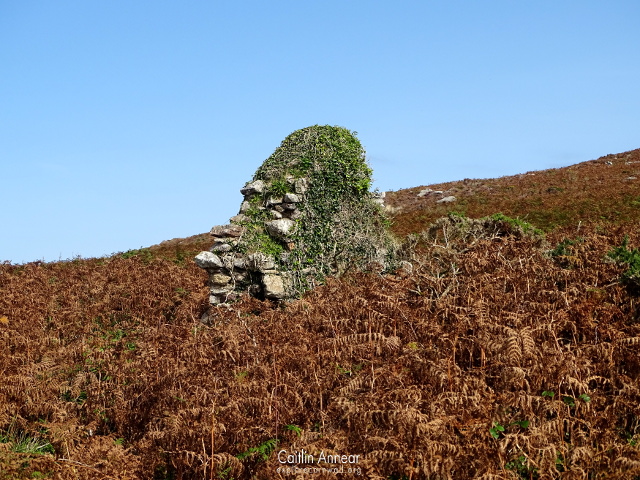
In 1869 the mine was again put up for sale, the reason given was due to the poor health of one of its principle shareholders, although the low prices of tin for several years was likely also a large factor.
The last major reworking began in 1871. Carn Galver Tin Mining Co Ltd appeared in July of that year with a £10,000 capital. While work began in earnest in search of “an excellent tin lode”, a shaft collapse and bad weather soon got in their way. A new 22″ whim engine house was being erected and a steam stamps driven by a horizontal engine built in its first year, with a 30″ pumping engine following soon after. The new engine allowed the miners to reach good ground, but costs had quickly mounted and the capital was running dry. New stamps were built at Bosigran to replace the ones at Porthmoina, but the budget didn’t allow for this to be completed. In December of 1873 the company was liquidated.
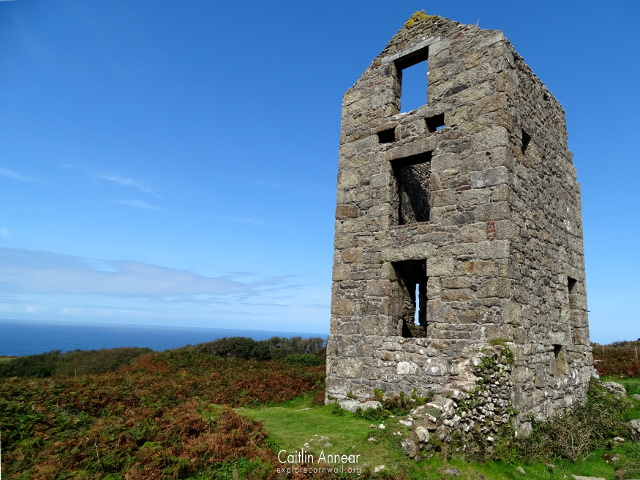
By January of the following year it was purchased by Bolitho and Mitchell for £1,600. Shafts continued to be deepened and winzes installed, however decreasing tin prices and the cost of running the mine led to its sale in 1875. A small income was gained by working its burrows, but by 1882 all of its machinery was put up for sale.
From 1898 a cost book company was started in an attempt to rework several of the mines in the area, including Carn Galver’s burrows. 1907 saw the opening of Bosigran Consolidated Mines which again included Carn Galver, however little came of this. The final time any work occurred on the site was in 1980 when the burrows from around Lane End shaft were removed to be treated at Geevor’s plant. In 1984 the National Trust took over the mine and consolidated the engine houses.
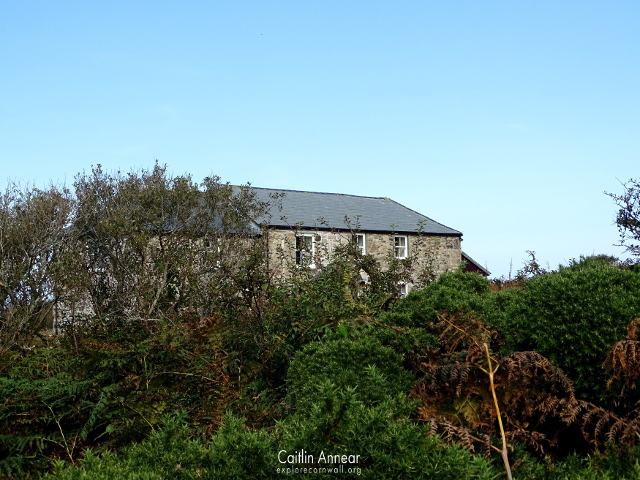
Engine (60 fathoms/110m), No 1/Lane End/Lane Engine/Anneal (120 fathoms/219m), Roscorlas/Boscorlas (50 fathoms/91m), Flat Rod (30 fathoms/55m), Old Engine (60 fathoms/110m), Whim/No2 (60 fathoms/110m), Moor (50 fathoms/91m), Eastern, Derry and Spearn.
Carn Galver, Caunter, Long Scorra, Trygwarra/Tiegwara, Rainger, South, Wheal Pit and Heathcock.
Some lodes may be part of the larger Morvah area.
1836-39
201 tons ore (204,225 kg)
1860, 1871-76
150 tons (106,685 kg) of black tin
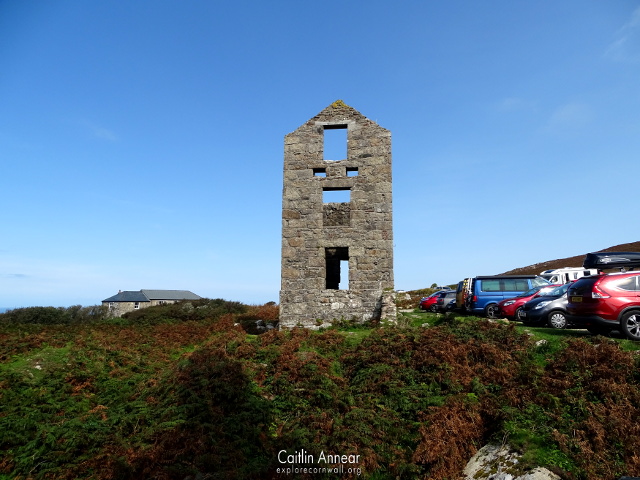
During the 1835 working of the mine there was a pumping engine on Old Engine shaft which ran flat rods to another, although this may have dated from an earlier time. In 1838 there was a 40″ pumping engine which also worked two shafts. From 1840 a 60′ waterwheel was installed at Porthmoina, this was possibly used for pumping as it was aligned with Lane End shaft, while another 36′ wheel drove 12 heads of stamps.
In 1858 a hydraulic engine was installed underground, possibly on the 60 fathom level. Two years later a 30″ double acting engine was built, pumping and hoisting from Lane End shaft. This was bought from Harvey’s for £745 and erected by Sims of Redruth. A 22″ whim was installed in 1871, with a 30″ pumping engine added just after (maybe in 1871 or 1873). In 1872 a 7″ and 17″ horizontal compound engine was erected and worked a Husband’s pneumatic two headed stamp.
Access is free to everyone from the car park and coastpath.
There is a small free carpark in front of the engine houses.
Alasdair, N. (2002) ‘The Carn Galver and Morvah Hill Mines’, The Journal of the Trevithick Society, 29, pp. 77–95.
Hamilton-Jenkin, A. K. (1961) Mines and Miners of Cornwall: I St Ives. Marazion: Worden Limited.
Herring, P. (1987) Archaeological Survey: Bosigran Zennor. Available at: http://map.cornwall.gov.uk/reports_event_record/1987/1987R012.pdf.
Nance, D. and Brown, K. (2014) A complete guide to the engine houses of West Cornwall. Gloucestershire: Lightmoor Press.
National Trust (no date) ‘Sign at Carn Galver’.
